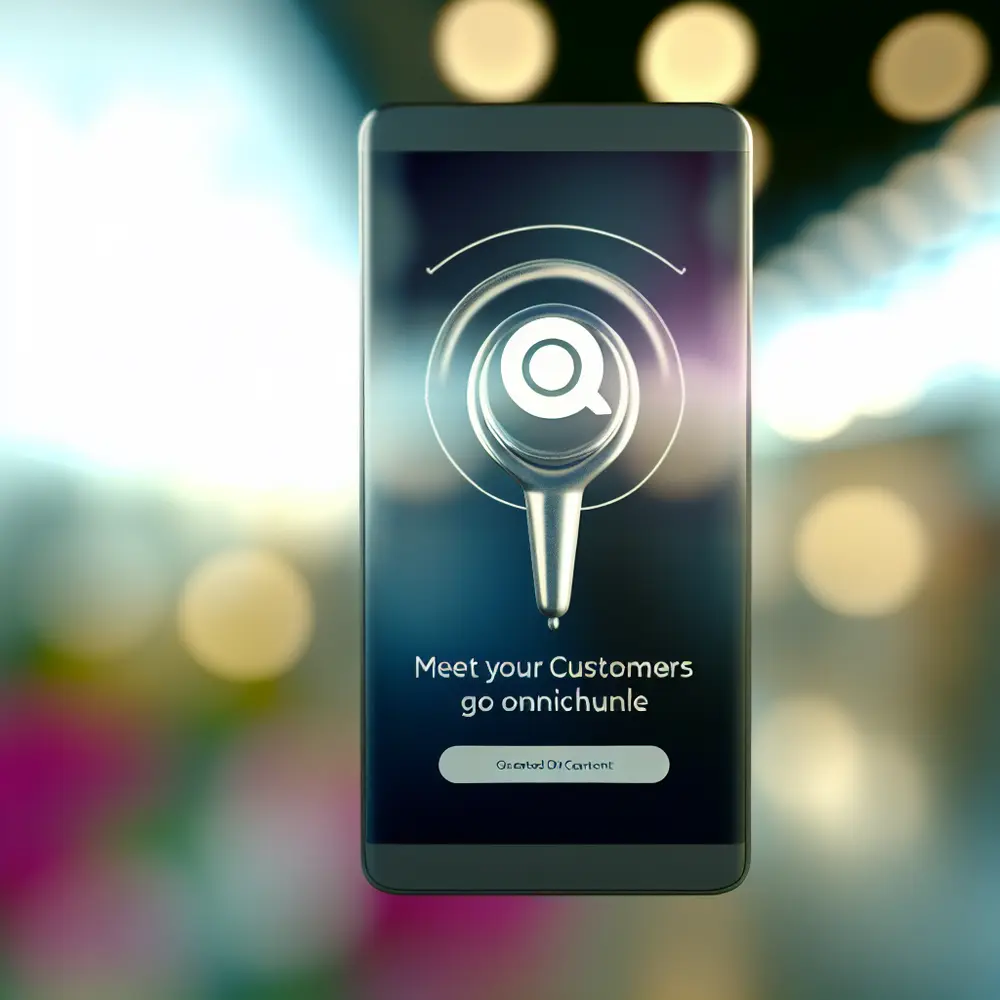In a constantly evolving world, adopting an omnichannel strategy has become vital for the survival and growth of businesses. Creating a differentiated customer experience is essential, and implementing integrated multichannel support is key to success. Business leaders must understand that consistent communication across all channels is not just a benefit but a necessity.
An effective omnichannel strategy involves more than just being present on multiple platforms; it focuses on delivering seamless and continuous customer service. This approach requires a deep understanding of consumer preferences. Investing in tools that integrate channels can provide valuable insights into customer behavior, enabling personalized and effective engagement. Thus, every interaction becomes an opportunity to strengthen customer relationships.
The shift to an omnichannel model starts with evaluating current channels and identifying gaps. Marketing managers should collaborate with customer service teams to ensure that each touchpoint aligns with the brand’s vision. Implementing innovative solutions, such as omnichannel support platforms, can simplify this process and provide a holistic view of customer interactions. By doing so, companies can create experiences that not only meet but exceed customer expectations.
Moreover, training teams plays a crucial role in this process. Ensuring that all employees, regardless of the channel, are well-informed and equipped to provide exceptional support builds customer confidence and brand loyalty. On the other hand, overlooking this critical step can result in inconsistent service that damages the company’s reputation.
In conclusion, the future of commerce and customer interaction lies within the omnichannel model. As consumer expectations continue to evolve, companies that fail to adapt risk falling behind. In an era where convenience and personalization dominate, taking the next step toward an omnichannel ecosystem is not just strategic but imperative. To learn more about how an omnichannel support platform can boost your business, visit Nexloo.
Introduction to Omnichannel: Why It Matters in Today’s Market
Omnichannel isn’t just a buzzword; it’s a crucial strategy for business success in today’s competitive landscape. As customer expectations evolve, you must adopt an omnichannel approach to meet consumers where they are. This means delivering a seamless experience across multiple channels, fostering heightened customer engagement and loyalty.
When you implement an effective omnichannel strategy, you create a holistic view of your customers. When they interact with your brand across various touchpoints—be it social media, email, or in-store—they expect a consistent experience. A successful omnichannel approach ensures you can track these interactions and provide personalized services tailored to customer preferences. Consequently, brands that understand and cater to their customers’ journeys enjoy increased satisfaction and repeat purchases.
For example, the retail chain ShopSmart successfully utilized an omnichannel approach by integrating its online and offline channels, resulting in a 30% sales increase. By enabling customers to check product availability online and pick up items in-store or have them delivered, they provided the convenience customers desired.
Multi-channel support forms the backbone of any omnichannel strategy. By integrating channels, you can provide timely and relevant information, improving customer service. Imagine a support team that utilizes insights from purchasing behavior to address inquiries effectively, transforming a simple transaction into a meaningful relationship. This engagement is not just beneficial but essential in today’s fast-paced market.
Research demonstrates that businesses with effective omnichannel customer engagement strategies retain an average of 89% of their customers, compared to just 33% for those with weak engagement. This data clearly highlights the importance of being present and responsive across all customer touchpoints.
Multi-channel Support: The Foundation of Omnichannel Success
To excel in the omnichannel landscape, you, as a business owner, must invest in the right technology and training. Implementing robust platforms that support omnichannel capabilities is essential. As customers navigate seamlessly between channels, ensure you have the infrastructure to deliver an exceptional experience at every step.
Consider the experience of the HealthPlus Clinic, which saw a 20% increase in customer satisfaction after implementing a unified support system. Their success stemmed from providing consistent communication through various channels, including phone, email, and social media.
With customers demanding more personalized and cohesive experiences, adopting an omnichannel strategy will suit their needs while driving long-term loyalty and profitability. To remain competitive, you must recognize the significance of integrating these channels into your overall business strategy.
Understanding the Omnichannel Strategy: Key Components and Benefits
Understanding the core components of an omnichannel strategy is crucial for your business to thrive. An effective omnichannel strategy integrates multiple channels to deliver a seamless customer experience. This holistic approach allows you to engage with customers wherever they are—whether online, in-store, or through mobile platforms.
A key component is multi-channel support. You must ensure all channels work together harmoniously—social media, email, and live chat. This connectivity allows for a unified message, making it easier for customers to transition without losing context, improving satisfaction and fostering trust in your brand.
For instance, the tech company GadgetWorld implemented an omnichannel strategy that resulted in a significant 25% increase in customer retention. Their success was due to seamless integration across all channels, enhancing both customer satisfaction and brand loyalty.
Furthermore, the insights gained from data analytics across various channels enable you to refine marketing strategies and optimize service delivery. Such insights will empower you to understand what drives customer decisions, making informed choices that enhance your bottom line.
In today’s rapidly changing market landscape, an omnichannel strategy ensures you remain competitive. Customers expect flexibility and responsiveness, making it essential to meet these demands. By investing in omnichannel solutions, you position your business as an industry leader, capable of adapting to evolving customer expectations.
Personalization in Omnichannel Strategies
Another essential aspect of an effective omnichannel strategy is personalization. By analyzing customer data, you can tailor your marketing efforts and offers to meet individual preferences. When customers feel understood, they are more likely to return, fostering brand loyalty.
Consider the case of FashionDirect, which improved its sales conversion rate by 40% after implementing personalized recommendations based on customer purchasing behavior. This demonstrates how critical personalization is in driving customer engagement and satisfaction.
Building an Effective Omnichannel Support System
Implementing an effective omnichannel support system is vital for businesses like yours aiming to enhance customer engagement. A successful omnichannel strategy ensures seamless interaction across all platforms, providing a consistent experience at every touchpoint. Your goal is to create a unified communication stream, allowing customers to engage wherever they choose.
Integrating multi-channel support not only boosts customer satisfaction but also builds loyalty. Customers often switch between channels, and your ability to adapt quickly to these preferences makes your business stand out. By utilizing an omnichannel approach, you can maintain a continuous dialogue, enhancing your understanding of customer needs.
Consider the example of the software company Connectify, which invested in technology to centralize customer interactions. This investment led to a reduction in response times by 50%, significantly enhancing customer satisfaction and service quality.
Training your staff to deliver personalized interactions is fundamental. With the right training and tools, employees can navigate between platforms easily, providing tailored advice aligned with customer preferences. This personal touch significantly increases the likelihood of successful resolutions.
Lastly, regular evaluation of your omnichannel strategy is essential for ongoing success. Collecting and analyzing customer feedback helps you identify strengths and weaknesses in your support system, ensuring your processes evolve with market trends and customer expectations.
Technological Investments for Omnichannel Success
Investing in technology enhances your omnichannel support infrastructure. Implementing platforms that centralize customer interactions and track engagement allows your business to respond effectively to customer inquiries.
Measuring Success: Key Metrics for Your Omnichannel Strategy
To effectively measure success in your omnichannel strategy, you must focus on key metrics reflecting customer engagement and satisfaction. Understand these metrics to assess performance across various channels and streamline operations.
One primary metric to consider is Customer Engagement Rate. This rate evaluates how often customers interact with your brand across multiple touchpoints, helping you identify areas for improvement. Fostering more interactions enhances customer loyalty and retention.
It’s also crucial to analyze Customer Satisfaction (CSAT) scores. These scores provide insights into customer perceptions and experiences with your brand. Regularly collecting feedback allows you to adjust strategies, enhancing customer experience across different platforms.
Conversion Rate by Channel is another vital metric. This rate highlights each channel’s effectiveness in driving sales. By identifying which channels yield the highest conversions, you can allocate resources more efficiently and streamline your omnichannel strategy.
Monitoring your Customer Lifetime Value (CLV) reveals the long-term impact of your omnichannel efforts. A higher CLV suggests that customers are engaged across channels and consistently choose your brand. Investing in the customer journey ensures sustained growth and loyalty.
Finally, track your Net Promoter Score (NPS) to gauge customer advocacy. A strong NPS indicates that your omnichannel strategy resonates well with customers, leading to exponential growth through word-of-mouth marketing.
Conclusion on Measurement Strategies
By focusing on these metrics, you can effectively evaluate your omnichannel strategy’s success, ensuring alignment with your business objectives and delivering exceptional value to customers.
Future Trends: What’s Next for Omnichannel Strategies?
The landscape of customer engagement is rapidly evolving, and omnichannel strategies are becoming increasingly essential for businesses seeking to stay competitive. By integrating various communication channels, you can create seamless customer experiences that foster engagement and loyalty.
One key trend is the rise of artificial intelligence (AI) and machine learning. These technologies enable you to analyze customer behavior and preferences, allowing for hyper-personalized marketing strategies. Leveraging data ensures that the right message reaches your target audience at the right time.
As remote and hybrid working models expand, you must take multi-channel support seriously. Customers expect to interact across various platforms—social media, chat, email, or in-person. Implementing robust multi-channel strategies will enhance customer engagement and satisfaction.
Additionally, the integration of augmented and virtual reality will significantly influence omnichannel experiences. These technologies allow customers to interact with products innovatively, bridging the gap between online and offline shopping.
Adopting a proactive approach to omnichannel integration is pivotal for your business’s success. Embracing these trends ensures that you are well-equipped to navigate the complexities of customer engagement in a rapidly changing market environment.
Conclusion on Omnichannel Future Trends
In conclusion, the future of omnichannel strategies lies in embracing technology and enhancing multi-channel support. Business owners and CX leaders must stay ahead of these trends to create meaningful customer interactions that drive long-term growth.









